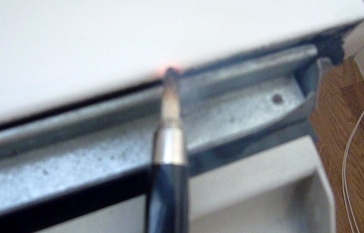A similar question was brought up on the equest mailing list not so long ago: see this thread.
Some info, mostly in the latter posts, is software agnostic and touches on why WLHP might be less efficient than one would think.
I certainly see the point that you'll increase electricity consumption due to the heat pump, pump power, fan power, and that electricity can be significantly more costly than gas. So in terms of costs, sure. In terms of source energy use it could be as well, depending on the energy mix of your location.
Anyways, an ASHRAE article is linked in one of the posts: link. I'm still skeptical until I see it for myself as I generally don't believe articles - especially about new construction modeling - unless I can see the model or I know something about the peer review process.
I'd make sure you have defined all the auxiliaries properly and don't have any major issues in your model before you rule.
Another thing I'd look into is infiltration, and R-value derating by having wall penetrations.
Sure, it's hard to quantify for certain, but having seen a ton of PTAC/PTHP in the NYC area, infiltration is definitely a massive issue. Even if it's installed top notch initially, down the road the caulking and weatherstripping will fail and it'll likely get overlooked.
Here's a (poor) picture of beautifully leaky PTAC, the smoke pen was truly incandescent.

Another side note, it doesn't apply to you since you seem to have gas PTACs, but another common problem of having PTHPs is in the heating mode in operation (rather that theoretically...) in cold climates. It's generally understood that below a certain OA temperature the PTHP will default to electric resistance (35°F for most models, sometimes you get some mixed mode between 25 and 35°F on some models).
One thing that's typically overlooked is that the PTHPs will often go into "boost mode" turning on the electric resistance full blast when the difference between the setpoint and on the actual indoor temperature is too great (3 to 5°F), even though the OA temperature is high enough to be in heat pump mode. For example, if it's 40°F outside, and when I come home from work and it's 65°F inside, so I turn on the PTHP and set the Tstat at 80°F thinking "it'll get warmer faster!" (in some way it will, but so will the bill...).
Those settings are either preconfigured in the units' control board (and not necesarilly mentioned very well in the documentation) or it's on DIP switches. If you overlook that and you let people have full control of the thermostat, you're in for a potentially nasty surprise if you do M&V.







